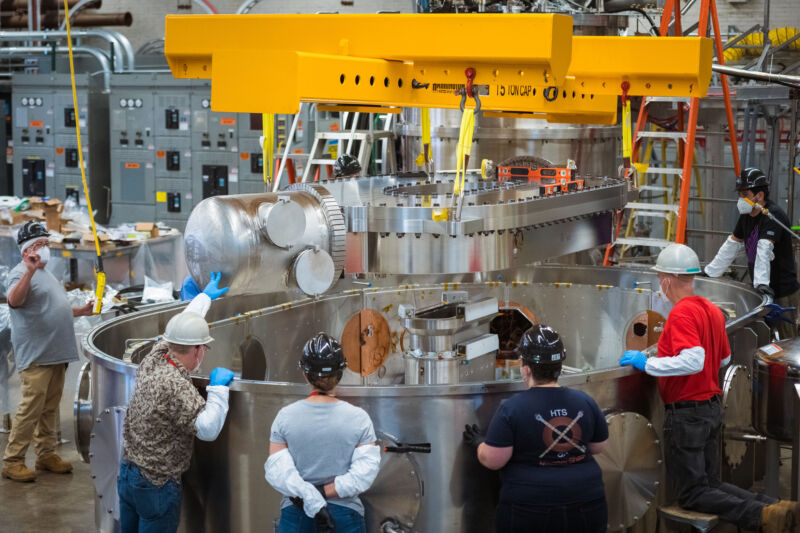-
 chevron_right
chevron_right
MIT-backed fusion startup hits key milestone: Big superconducting magnets
John Timmer · news.movim.eu / ArsTechnica · Wednesday, 8 September, 2021 - 20:43 · 1 minute

Enlarge / The assembled magnet gets lowered into its testing apparatus. (credit: Commonwealth Fusion Systems)
In 2015, a group of physicists at MIT did some calculations to rethink how we're approaching the problem of fusion power. High-temperature, nonmetallic superconductors were now commercially available and could allow the generation of stronger magnetic fields, enabling a simpler, more compact fusion reactor. But the physicists behind the work didn't stop when the calculating was done; instead, they formed a company, Commonwealth Fusion Systems, and set out to put their calculations to the test.
On Tuesday, Commonwealth Fusion Systems announced that it had hit a key milestone on its roadmap to having a demonstration fusion plant operating in 2025. The company used commercial high-temperature superconductors to build a three-meter-tall magnet that could operate stably at a 20-tesla magnetic field strength. This magnet is identical in design to the ones that will contain the plasma at the core of the company's planned reactor.
Aggressive roadmap
Giving yourselves less than 10 years to solve a problem that an entire research field has been struggling with for decades is ambitious, but it reflects how relevant fusion could be to helping with the climate crisis we're facing. Several of the company's leaders mentioned climate change as an inspiration for their work.

